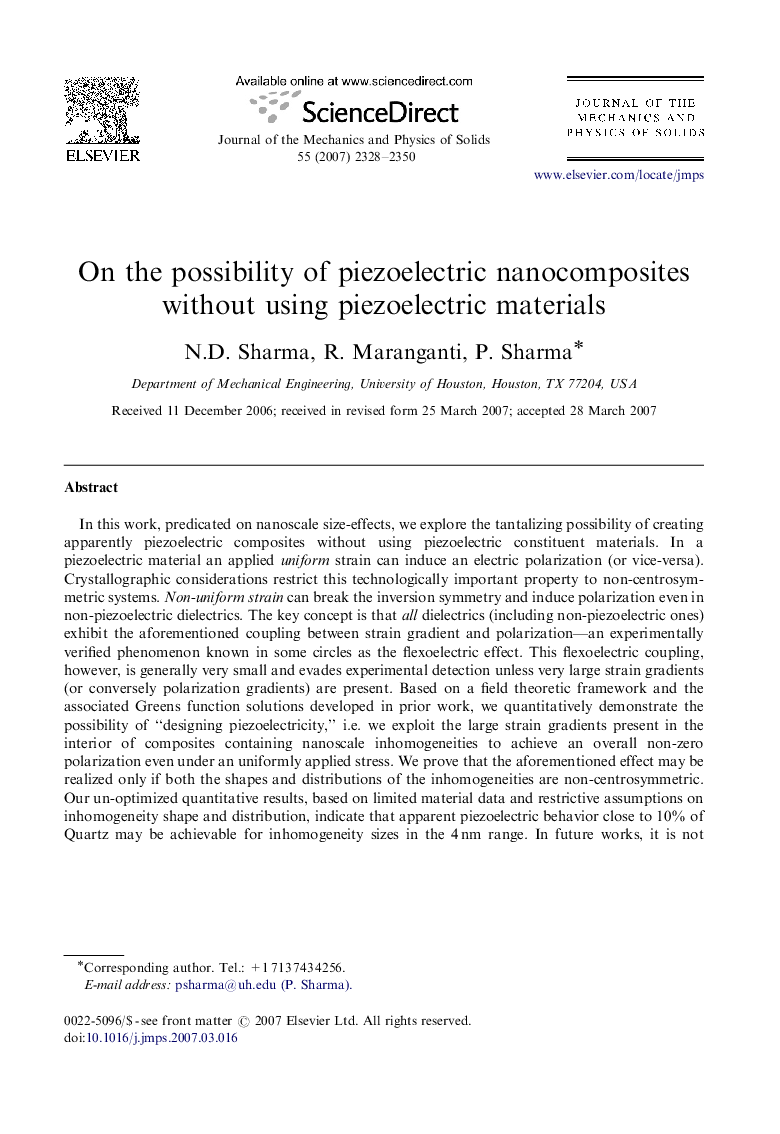| کد مقاله | کد نشریه | سال انتشار | مقاله انگلیسی | نسخه تمام متن |
|---|---|---|---|---|
| 794004 | 1467155 | 2007 | 23 صفحه PDF | دانلود رایگان |

In this work, predicated on nanoscale size-effects, we explore the tantalizing possibility of creating apparently piezoelectric composites without using piezoelectric constituent materials. In a piezoelectric material an applied uniform strain can induce an electric polarization (or vice-versa). Crystallographic considerations restrict this technologically important property to non-centrosymmetric systems. Non-uniform strain can break the inversion symmetry and induce polarization even in non-piezoelectric dielectrics. The key concept is that all dielectrics (including non-piezoelectric ones) exhibit the aforementioned coupling between strain gradient and polarization—an experimentally verified phenomenon known in some circles as the flexoelectric effect. This flexoelectric coupling, however, is generally very small and evades experimental detection unless very large strain gradients (or conversely polarization gradients) are present. Based on a field theoretic framework and the associated Greens function solutions developed in prior work, we quantitatively demonstrate the possibility of “designing piezoelectricity,” i.e. we exploit the large strain gradients present in the interior of composites containing nanoscale inhomogeneities to achieve an overall non-zero polarization even under an uniformly applied stress. We prove that the aforementioned effect may be realized only if both the shapes and distributions of the inhomogeneities are non-centrosymmetric. Our un-optimized quantitative results, based on limited material data and restrictive assumptions on inhomogeneity shape and distribution, indicate that apparent piezoelectric behavior close to 10% of Quartz may be achievable for inhomogeneity sizes in the 4 nm range. In future works, it is not unreasonable to expect enhanced performance based on optimization of shape, topology and appropriate material selection.
Journal: Journal of the Mechanics and Physics of Solids - Volume 55, Issue 11, November 2007, Pages 2328–2350